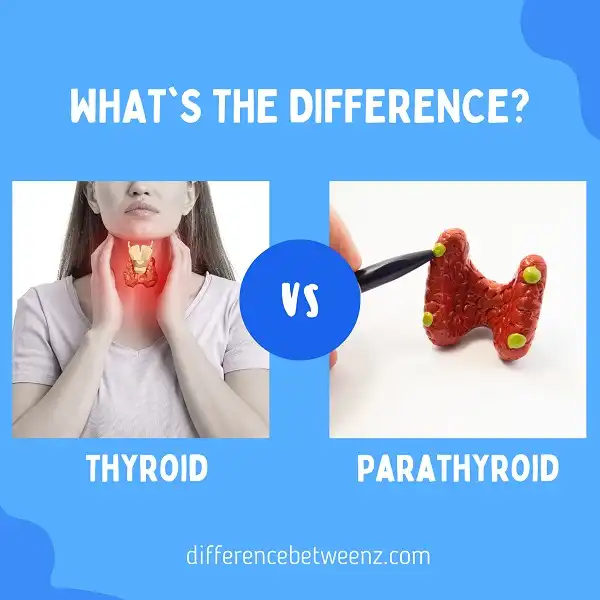The thyroid and parathyroid are two of the most important glands in the body. Though they both play a significant role in maintaining health, they have very different functions.
What is Thyroid?
The thyroid is a butterfly-shaped gland that is located in the front of the neck. It produces hormones that regulate metabolism, heart rate, and body temperature. The thyroid also plays an important role in development and growth. When the thyroid does not produce enough hormones, it is called hypothyroidism. This can result in weight gain, fatigue, and dry skin. If the thyroid produces too much hormone, it is called hyperthyroidism. This can cause weight loss, anxiety, and irregular heartbeat. thyroid disorders are relatively common and can often be managed with medication.
What is Parathyroid?
Parathyroid gland is located in the neck near the thyroid gland. It helps to regulate calcium levels in the body. Calcium is necessary for strong bones and teeth, as well as for proper muscle function. When calcium levels get too low, the parathyroid gland releases a hormone that signals the body to release calcium from the bones into the bloodstream. This hormone also increases the absorption of calcium from food in the intestines.
In addition, the parathyroid gland regulates phosphorus levels in the body. Phosphorus is necessary for proper bone growth and development. The parathyroid gland helps to keep phosphorus levels in balance by controlling how much is absorbed from food and how much is excreted by the kidneys. Too much phosphorus can lead to problems such as kidney stones, while too little phosphorus can cause weak bones.
Difference between Thyroid and Parathyroid
Thyroid and parathyroid are two glands that play an important role in the body’s metabolism. Although both glands secrete thyroid hormones, they do so in slightly different ways. Thyroid hormones help maintain normal levels of metabolism in almost every cell of the body. The parathyroid glands, meanwhile, are located near the thyroid gland and help regulate calcium levels in the blood.
If calcium levels become too high or low, it can cause a wide variety of symptoms, such as muscle spasms, migraines and even heart attacks. It’s important to keep your parathyroid levels in check if you have thyroid problems, since oversecretion of the hormone can lead to hyperparathyroidism.
In addition, there are other causes of hyperparathyroidism that aren’t related to thyroid problems, including chronic kidney disease or chronic stress.
Conclusion
While the two organs have different roles, they work together to regulate the levels of calcium and phosphorus in the body. Parathyroid glands are located near the thyroid gland. The parathyroid gland releases a hormone called parathyroid hormone (PTH) when calcium levels in the blood get too high or too low.
Calcium is a mineral that’s necessary for strong bones and teeth, as well as for normal muscle function. When calcium gets too high, the parathyroid gland releases more PTH. This increases the amount of calcium your body absorbs from the food you eat. When calcium gets too low, the parathyroid gland releases less PTH. This decreases the amount of calcium that’s absorbed from food and helps your body expel any excess calcium from your bones.
If you have hyperparathyroidism, your parathyroid gland may not be able to regulate calcium and phosphorus levels properly.


